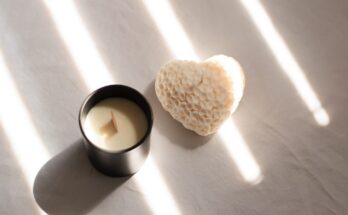Skin body painting has a long and varied history spanning thousands of years. Ancient civilizations, such as the Egyptians, utilized body painting for religious and ceremonial purposes. Many African and Indigenous cultures have employed body painting as a means of cultural expression, conveying social status, identity, and spiritual beliefs.
Some cultures used body painting as protection against environmental elements and to establish a connection with nature. Throughout history, skin body painting has served as a powerful artistic medium, with diverse cultures developing unique styles and techniques. In more recent times, skin body painting has been employed as a form of protest and political expression.
During the 1960s, body painting gained popularity among the counterculture movement, with artists using their bodies as canvases to communicate messages of peace, love, and social change. Today, skin body painting remains a dynamic and evolving art form, with artists drawing inspiration from both traditional and contemporary sources to create visually striking and thought-provoking works of art.
Key Takeaways
- Skin body painting has been practiced for thousands of years, with evidence of its use in ancient civilizations such as the Egyptians, Greeks, and Indigenous tribes.
- Techniques and tools used in skin body painting have evolved over time, with the use of natural pigments and dyes giving way to modern body paints and airbrushing techniques.
- Skin body painting holds cultural significance in many societies, often used in rituals, ceremonies, and celebrations to symbolize status, identity, and spirituality.
- In modern art, skin body painting has been used as a form of expression and protest, challenging societal norms and addressing issues such as body politics and gender identity.
- Skin body painting has become a popular form of expression in fashion and entertainment, with body-painted models and performers often used to create visually stunning and impactful presentations.
- Skin body painting can have a significant impact on body image and self-expression, empowering individuals to embrace their bodies and challenge conventional beauty standards.
- The future of skin body painting is marked by trends and innovations, with the use of technology, UV-reactive paints, and 3D effects pushing the boundaries of artistic expression on the human canvas.
Techniques and Tools Used in Skin Body Painting
Brush Painting and Airbrushing
Skin body painting involves a variety of techniques and tools to create intricate and detailed designs on the body. One of the most common techniques is brush painting, where artists use brushes of different sizes to apply pigments and dyes to the skin. Airbrushing is another popular technique, which involves using an airbrush gun to spray paint onto the body, creating smooth and seamless designs.
Stencils and Tools
Some artists also use stencils to create precise patterns and designs on the skin. The tools used in skin body painting can vary depending on the desired effect and the artist’s personal style. Water-based paints are often used for their vibrant colors and easy washability, while alcohol-based paints provide long-lasting and waterproof designs.
Adding Texture and Dimension
In addition to paints, artists may use sponges, makeup brushes, and other tools to blend colors and create intricate details. Some artists also incorporate other materials such as glitter, sequins, and jewels to add texture and dimension to their body paintings.
Cultural Significance of Skin Body Painting

Skin body painting holds deep cultural significance in many societies around the world. In some Indigenous cultures, body painting is used as a way to connect with ancestral spirits and to honor traditional customs and beliefs. For example, the Maori people of New Zealand have a long-standing tradition of using intricate facial and body tattoos, known as moko, to signify their identity, social status, and genealogy.
In Africa, body painting has been used as a form of storytelling, with different designs and symbols representing specific tribal affiliations, rituals, and spiritual beliefs. In addition to its cultural significance, skin body painting has also been used as a form of healing and empowerment. In some Indigenous cultures, body painting is used in healing rituals to restore balance and harmony to the individual and the community.
For survivors of trauma or abuse, body painting can be a powerful tool for reclaiming one’s body and expressing inner strength and resilience. Overall, skin body painting serves as a powerful form of cultural expression, connecting individuals to their heritage and traditions while also serving as a means of personal empowerment.
The Role of Skin Body Painting in Modern Art
| Artist | Artwork | Year | Medium |
|---|---|---|---|
| Yves Klein | Anthropometry series | 1960 | Human bodies as “living brushes” |
| Emma Hack | Body painting installations | 2005 | Photography and body painting |
| Liu Bolin | Hiding in the City series | 2005 | Camouflage body painting |
Skin body painting has played a significant role in modern art, challenging traditional notions of what constitutes a work of art and pushing the boundaries of creativity and self-expression. In the 20th century, artists such as Yves Klein and Yayoi Kusama used the human body as a canvas for their avant-garde artworks, blurring the lines between performance art, sculpture, and painting. The body became a site for exploring themes of identity, gender, and the relationship between the self and the external world.
Contemporary artists continue to push the boundaries of skin body painting as a form of modern art. Some artists use body painting as a way to explore themes of social justice, environmentalism, and human rights, using their bodies as a platform for activism and awareness. Others use body painting as a form of performance art, creating immersive experiences that challenge viewers’ perceptions of the human form and its relationship to space and time.
Overall, skin body painting has become an integral part of modern art, offering new possibilities for creative expression and pushing the boundaries of what is considered art.
Skin Body Painting in Fashion and Entertainment
Skin body painting has become increasingly popular in the worlds of fashion and entertainment, with designers and performers using body painting as a way to create stunning visual effects and make bold fashion statements. In the world of fashion, body painting has been used in avant-garde runway shows and editorial photo shoots to create striking looks that challenge traditional beauty standards. Designers such as Alexander McQueen and Jean Paul Gaultier have incorporated body painting into their collections, using it as a way to explore themes of identity, transformation, and the relationship between the body and clothing.
In entertainment, skin body painting has been used in film, theater, and music performances to create elaborate costumes and special effects. In movies such as “Avatar” and “Guardians of the Galaxy,” body painting was used to transform actors into otherworldly creatures, blurring the lines between reality and fantasy. In theater productions such as Cirque du Soleil shows, body painting has been used to create visually stunning performances that captivate audiences with their creativity and artistry.
Overall, skin body painting has become an integral part of fashion and entertainment, offering new possibilities for creating immersive visual experiences.
The Impact of Skin Body Painting on Body Image and Self-Expression

Self-Expression and Empowerment
Skin body painting has had a profound impact on how individuals perceive their bodies and express themselves. For many people, body painting serves as a form of self-expression and empowerment, allowing them to celebrate their bodies in all their diversity and beauty. Body painting can be a way for individuals to reclaim ownership of their bodies and challenge societal norms around beauty and perfection.
Celebrating Individuality
By using their bodies as canvases for artistic expression, individuals can embrace their unique features and celebrate their individuality. On a broader scale, skin body painting has also played a role in promoting positive body image and self-acceptance. By showcasing diverse bodies adorned with beautiful designs, body painting challenges narrow beauty standards and celebrates bodies of all shapes, sizes, and colors.
Promoting Positive Body Image
This can have a powerful impact on individuals who may struggle with body image issues or feel marginalized by mainstream beauty ideals. Overall, skin body painting serves as a powerful tool for promoting self-expression, self-acceptance, and positive body image.
The Future of Skin Body Painting: Trends and Innovations
As skin body painting continues to evolve as an art form, new trends and innovations are shaping its future. One emerging trend is the use of technology in body painting, with artists incorporating digital projections and augmented reality to create interactive and immersive experiences. This allows for new possibilities in creating dynamic designs that respond to movement and engage with the surrounding environment.
Additionally, advancements in body paint formulations are leading to longer-lasting and more vibrant colors that can withstand various environmental conditions. Another trend in skin body painting is the growing emphasis on sustainability and ethical practices. Many artists are exploring eco-friendly alternatives to traditional body paints by using natural pigments derived from plants or minerals.
This shift towards sustainable practices reflects a broader movement within the arts towards environmental consciousness and ethical sourcing. Furthermore, there is an increasing focus on inclusivity in skin body painting, with artists celebrating diverse bodies and identities through their work. In conclusion, skin body painting has a rich history rooted in cultural traditions and artistic expression.
From ancient civilizations to modern art movements, skin body painting has continued to captivate audiences with its creativity and visual impact. As it continues to evolve in fashion, entertainment, and art, skin body painting will undoubtedly play an influential role in shaping our perceptions of beauty, identity, and self-expression in the years to come.
If you’re interested in exploring the art of skin body painting, you may also want to check out this article on thepharmagency.com about the history and cultural significance of body art. The History and Cultural Significance of Body Art delves into the various traditions and practices of body painting around the world, providing a deeper understanding of this unique form of artistic expression.
FAQs
What is skin body painting?
Skin body painting is the art of using the human body as a canvas for creating designs, patterns, and images using body-safe paints and pigments. It is a form of artistic expression and can be used for cultural, ceremonial, or entertainment purposes.
What types of body paints are used for skin body painting?
Body paints used for skin body painting are typically water-based or alcohol-based and are specifically formulated to be safe for use on the skin. These paints are designed to be non-toxic, hypoallergenic, and easily washable.
Is skin body painting safe for the skin?
When done using body-safe paints and under proper supervision, skin body painting is generally safe for the skin. It is important to use high-quality, non-toxic paints and to ensure that the skin is properly prepared and cared for before and after the painting process.
What are the cultural and historical significance of skin body painting?
Skin body painting has been used for centuries in various cultures around the world for ceremonial, spiritual, and cultural purposes. It has been used in rituals, celebrations, and as a form of artistic expression. Different cultures have their own unique traditions and meanings associated with body painting.
What are some popular events or occasions where skin body painting is showcased?
Skin body painting is often showcased at events such as music festivals, art exhibitions, fashion shows, and cultural celebrations. It is also commonly used in theatrical performances, photo shoots, and body painting competitions.



